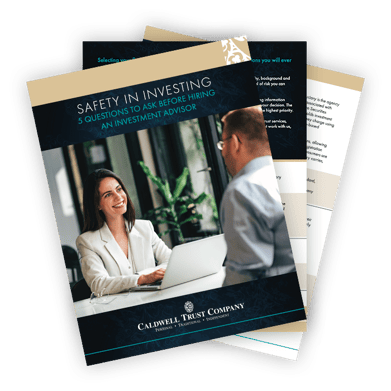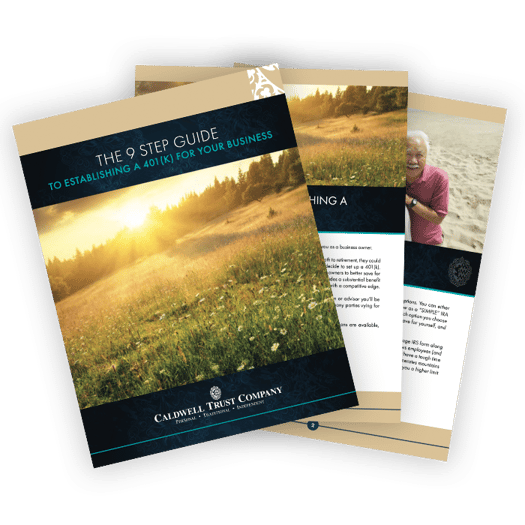%20Plan.jpg?width=550&name=Building%20An%20Adequate%20Fund%20Line-Up%20for%20Your%20401(K)%20Plan.jpg) The main reason for running a 401(k) plan is to provide a way for your employees to build a retirement nest egg through tax-deferred investing. Hence, your investment options are the backbone of your 401(k) plan, and choosing the right mix of investments - known as your fund line-up - is a critical step in creating the best possible retirement plan for your employees.
The main reason for running a 401(k) plan is to provide a way for your employees to build a retirement nest egg through tax-deferred investing. Hence, your investment options are the backbone of your 401(k) plan, and choosing the right mix of investments - known as your fund line-up - is a critical step in creating the best possible retirement plan for your employees.
Some employers may choose to partner with an investment advisor to help them build their 401(k) fund line-up. But whether you seek help or go at it alone, there are four best practices that you should uphold to effectively enhance your employees’ retirement savings.
1. Identify Plan ObjectivesThe success of your retirement plan is contingent upon several important factors, including your plan objectives. Having a clear vision of what your plan should achieve will also guide which investment options you choose.
Many employers start out with a different mix of 401(k) plan objectives, and those are likely to grow and change over time. And although there are endless plan design options, below are the three most common objectives:
- Employee benefit: Leveraging a competitive retirement package as an incentive to attract and retain employees
- HCE benefit: Designing a plan to help HCEs (Highly Compensated Employees) max out tax-deferred savings
- Cost minimization: Focusing on minimizing expenses related to the 401(k) plan
It’s important to note that some of these objectives are complementary, while others may compete. For example, if your main objective is to maximize employees’ benefit, then you may offer a generous 401(k) match. That may also enhance the HCE benefit, but it won’t help minimize company costs. To find the right balance, take advantage of plan design features, like eligibility, employee contributions and discretionary profit sharing, to design a plan that supports all three objectives.
2. Focus on the Fundamentals of Investing
Once your objectives are established, it’s time to select your investment options. And one rule-of-thumb is to create a quality, diversified investment portfolio.
Your company’s plan should have a different mix of investment options, including stocks, bonds, real estate funds, international securities and cash. When building your line-up, however, the key is to keep it simple. Not only does this keep employees from feeling discouraged or confused by too many choices, but it can also encourage diversification on their end. The optimal number of choices is 12-15, especially considering that on average participants only use three investment funds.
In addition to a breadth of assets, your 401(k) fund line-up should contain qualified funds. If you notice your plan is heavily weighted toward a certain class of investments or feel the quality of the investment options is lacking, it's time for a serious chat with your investment advisor. It may be time to look for a better plan for your employees.
3. Create a Tiered Line-up that Reflects Plan Objectives
Creating a tiered line-up allows you to help employees make better investment decisions by aligning particular types of investments with their preferences. Most plans typically include 3-4 tiers to choose from, and they’re based on factors such as employee age, income and other investments, risk tolerance and target retirement date.
With a tiered investment strategy, you can rest assured your employees are capable of managing and growing their investment options in order to gain long-term financial security. And a tiered lineup—coupled with plan design options that make managing the 401(k) easier—helps ensure the best results for individual retirees. For example, automatic enrollment and automatic escalation are two tools that help participants manage their retirement savings, which in turn helps you as the plan sponsor.
On the sponsor side, providing employees with a framework to guide their investment decisions can help:
- Reduce investor risk
- Create a happier, more productive staff
- Keep employees on track for retirement
- Lower the risk of fiduciary liability
4. Ensuring Active Oversight by Fund Management
No matter what individual lineups look like, the 401(k) plan won't be very successful if you, the plan sponsor, are not providing frequent and robust oversight. If you aren't evaluating fund performance and communicating with your employees, consider soliciting regular feedback to improve the process.
To ensure your 401(k) plan is effectively optimizing your employees’ retirement savings, you have to be diligent about building an adequate fund line-up that supports your plan objectives, drives diversification and provides tiered investment options for your employees. The ultimate goal is to build an investment menu that ensures your employees can retire comfortably and on time.


%20Plan.jpg)







